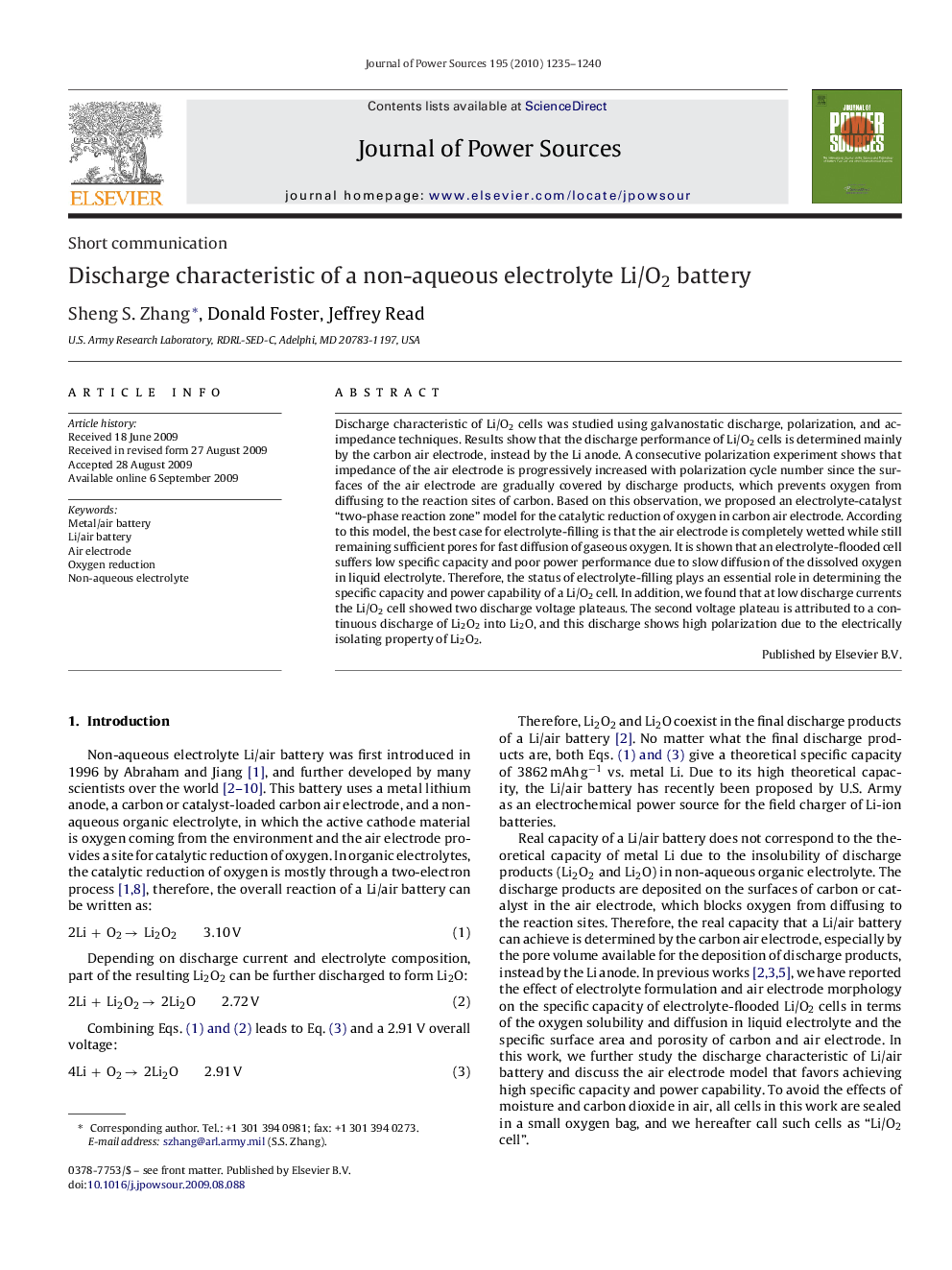| Article ID | Journal | Published Year | Pages | File Type |
|---|---|---|---|---|
| 1285127 | Journal of Power Sources | 2010 | 6 Pages |
Discharge characteristic of Li/O2 cells was studied using galvanostatic discharge, polarization, and ac-impedance techniques. Results show that the discharge performance of Li/O2 cells is determined mainly by the carbon air electrode, instead by the Li anode. A consecutive polarization experiment shows that impedance of the air electrode is progressively increased with polarization cycle number since the surfaces of the air electrode are gradually covered by discharge products, which prevents oxygen from diffusing to the reaction sites of carbon. Based on this observation, we proposed an electrolyte-catalyst “two-phase reaction zone” model for the catalytic reduction of oxygen in carbon air electrode. According to this model, the best case for electrolyte-filling is that the air electrode is completely wetted while still remaining sufficient pores for fast diffusion of gaseous oxygen. It is shown that an electrolyte-flooded cell suffers low specific capacity and poor power performance due to slow diffusion of the dissolved oxygen in liquid electrolyte. Therefore, the status of electrolyte-filling plays an essential role in determining the specific capacity and power capability of a Li/O2 cell. In addition, we found that at low discharge currents the Li/O2 cell showed two discharge voltage plateaus. The second voltage plateau is attributed to a continuous discharge of Li2O2 into Li2O, and this discharge shows high polarization due to the electrically isolating property of Li2O2.
